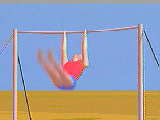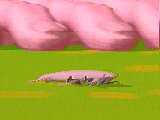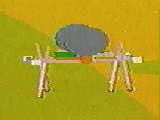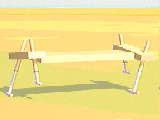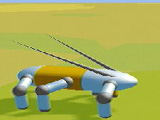| The Leg Laboratory uses physics-based computer simulation to study robot control systems, animal behavior, and to create automated computer characters. |
On The Run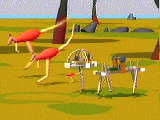 A cartoon animation with automated characters that use physics-based simulation and task-level control. |
